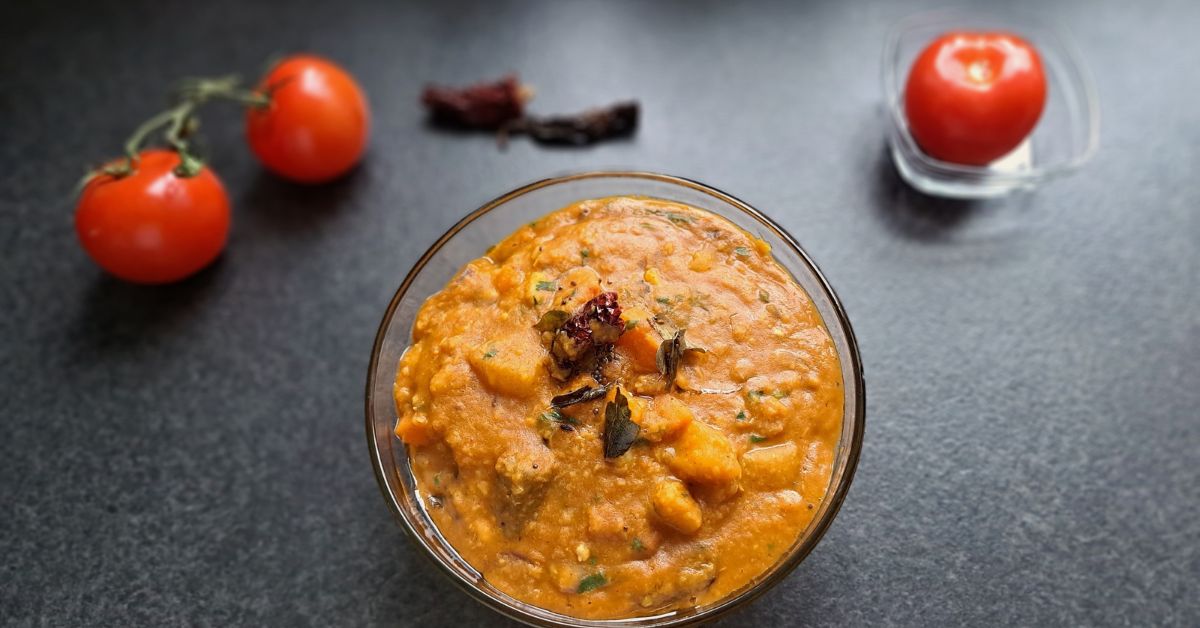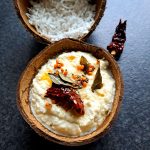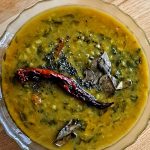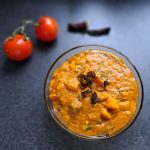Sambar

Sambar is a popular South Indian dish that is a staple in many households. It has found its way into the hearts and homes of people across the Indian subcontinent. The foundation of a great sambar lies in its ingredients, each contributing to its flavours. This wholesome curry is a harmonious blend of lentils, assorted vegetables, tamarind, and a distinctive mix of spices.
Toor dal and moong dal form the protein base, while a medley of vegetables adds colour and nutrition. Tamarind provides tanginess, and a carefully crafted blend of spices imparts the distinctive taste that sets this dish apart. Toor dal is cooked until soft and mushy, creating a creamy texture. Vegetables are then cooked to perfection, and the dal is combined with the vegetables to form the base of the dish. Tamarind pulp is added for a delightful tanginess.
Selection of vegetables for Sambar
One of the wonderful aspects of sambar is its flexibility when it comes to vegetables. You can customize the dish based on your preferences and the seasonal availability of vegetables. Here’s a list of commonly used vegetables in sambar, but feel free to add your favourites or whatever you have on hand: Carrots (sliced into rounds or cubes), Beans (Trimmed and chopped into bite-sized pieces), Potatoes (Peeled and diced), Pumpkin (Peeled and cubed), Indian cucumber (peeled and cubed), Eggplant (Brinjal)-Cubed or sliced, Okra (Ladyfinger)-Trimmed and sliced, Drumsticks cut into 2-3 inch pieces.
Variations
There are many variations in the preparation of sambar each with its unique regional twist. Some prepare the sambar masala freshly and use it in the preparation. I completely understand the desire for a simpler version. Here’s a basic and easy recipe that skips the step of preparing fresh sambar masala, making it a quicker alternative. This simplified version maintains the deliciousness of sambar without the need for preparing a separate masala.
Sambar is a versatile dish that can be served with a variety of accompaniments. It is traditionally enjoyed with steamed rice, but it pairs equally well with idli, dosa, vada, or even as a soup on its own. Fresh coriander leaves provide a vibrant garnish, adding a touch of freshness to the finished dish.




Sambar
Ingredients
To cook the dal
- ¼ cup toor dal
- ¼ cup split yellow moong dal
- 3 -4 small onions
- 1 potato cubed
- 3 cloves of garlic
- ¼ tsp asafoetida hing
- Water as needed
- Salt
To cook the vegetables
- 5 Lady´s finger cut into 1 inch pieces
- 3 carrots cubed
- 1 medium-sized Indian cucumber
- 10 small onions
- 1 tomato
- ½ raw mango
- 3 tbsp oil
- 2 tsp Kashmiri chilly powder
- ½ tsp chilly powder
- ½ tsp turmeric powder
- 3 tsp coriander powder
- Tamarind paste as needed
- Salt
- Water as needed
- 1 tsp sugar
Tempering
- 3 tsp coconut oil
- ½ tsp mustard
- ½ tsp cumin/jeera
- ⅛ tsp fenugreek seeds
- 1 dry red chilly
- A few curry leaves
- Coriander leaves for garnish
- Pinch asafoetida/hing
Instructions
Step 1
- Soak a lemon-sized tamarind in warm water for about 15-20 minutes. Squeeze the tamarind to extract the pulp, and discard the solids.
Step 2
- Rinse toor dal and moong dal thoroughly and cook them in a pressure cooker with enough water, salt, garlic cloves, potato (cubed), small onions, and asafoetida, until they become soft and mushy. (approximately about 3-4 whistles on medium flame). Mash the cooked dal and set aside.
Step 3
- Heat a large pot or a kadai, add coconut oil, add the cubed carrot and cook for about 5-7 minutes.
- After the carrot is half-cooked, add the other chopped vegetables, small onions, and tomatoes and cook until the vegetables are tender.
- Add all the spice powders and combine everything well. Add the tamarind pulp and cook for another 5 -7 minutes until the raw smell of the masala disappears. Don´t burn the masalas, if needed add a little amount of water.
- Add the mashed dal to the cooked vegetables and mix well. Adjust the consistency by adding water if needed. Add 1 tsp sugar/jaggery powder to balance all the taste.
- Let the sambar simmer for 5-7 minutes on low heat, allowing the flavours to meld.
- Garnish with fresh coriander leaves.
Tempering (optional)
- Heat coconut oil in a small pan, add cumin/jeera, mustard, dry red chilly, curry leaves, fenugreek seeds and a pinch of asafoetida/hing.
- Let them splutter and pour this tempering on the sambar.
- Your delicious and aromatic sambar is now ready to be served! Enjoy it with rice, idli, dosa, or any other South Indian dish of your choice.
Notes

2 thoughts on “Sambar”